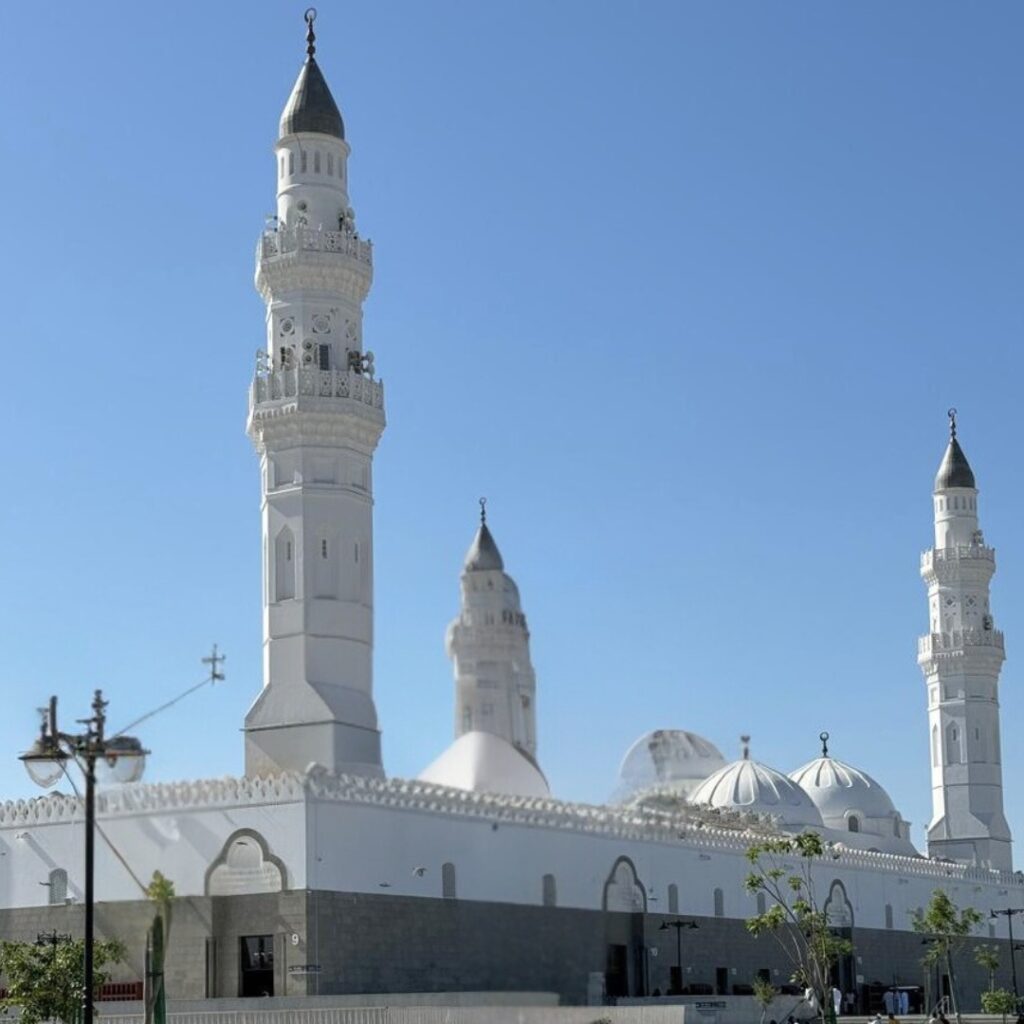
Umrah is not just about performing the rituals of Tawaf and Sa’i; it is also an opportunity to immerse yourself in the rich Islamic history and spirituality associated with the sacred cities of Makkah and Madinah. This journey is a chance to walk the very paths that our beloved Prophet Muhammad (PBUH) and his companions walked, connecting us to the roots of our faith.
Ziyarat, or visiting significant historical and religious sites, plays an essential role in enhancing the spiritual experience of Umrah. It allows pilgrims to reflect on the sacrifices, teachings, and values that form the foundation of Islam. In this blog, we’ll explore the importance of Ziyarat during Umrah and highlight key sites you should visit to make your pilgrimage even more meaningful.
Why is Ziyarat Important During Umrah?

Ziyarat provides pilgrims with a deeper understanding of Islamic history, offering insights into the life of Prophet Muhammad (PBUH), his companions, and the events that shaped the early days of Islam. Visiting these sites can strengthen your faith and help you appreciate the trials and sacrifices that were made to establish and spread Islam.
In addition to spiritual benefits, Ziyarat fosters a sense of unity and connection among Muslims, as millions of pilgrims visit these sites annually to honor the legacy of our faith.
Key Sites to Visit in Makkah
1. Jabal Al-Noor (The Mountain of Light)

This is the location of the famous Cave Hira, where Prophet Muhammad (PBUH) received the first revelation of the Quran from Angel Jibreel (Gabriel). Climbing Jabal Al-Noor is not an easy task, but the spiritual reward of standing at this historic site makes it worth the effort.
Reflection: Visiting Jabal Al-Noor reminds us of the importance of patience, dedication, and the divine guidance that shaped the mission of the Prophet (PBUH).
2. Mina, Muzdalifah, and Arafat

Although primarily associated with Hajj, these sites hold great historical and spiritual significance. Mina is the site of the stoning of the devil, Muzdalifah is where pilgrims collect pebbles, and Arafat is where the Prophet (PBUH) delivered his farewell sermon.
Reflection: These locations highlight the importance of sacrifice, reflection, and obedience to Allah’s commands.
3. Jabal Thawr (The Cave of Thawr)

This is the cave where the Prophet Muhammad (PBUH) and his companion Abu Bakr (RA) sought refuge while fleeing from Makkah to Madinah during the Hijrah. The story of their escape and trust in Allah’s protection is an inspiring chapter in Islamic history.
Reflection: Jabal Thawr reinforces the value of trust in Allah (SWT) and the significance of true friendship in the path of righteousness.
Key Sites to Visit in Madinah
4. Masjid Al-Quba

Masjid Al-Quba holds the honor of being the first mosque built in Islam. The Prophet (PBUH) personally participated in its construction, and praying here is equivalent to performing an Umrah, according to some narrations.
Reflection: This mosque represents the foundation of Islamic brotherhood, community, and devotion.
5. Jannat-ul-Baqi (The Cemetery of Baqi)

Located near Masjid an-Nabawi, Jannat-ul-Baqi is the final resting place of many of the Prophet’s companions, family members, and early followers of Islam.
Reflection: Visiting Jannat-ul-Baqi reminds us of our mortality and the importance of preparing for the Hereafter.
6. Masjid Al-Nabawi and the Noble Rawdah
Masjid Al-Nabawi is the second holiest site in Islam, where the Prophet (PBUH) is buried. The Rawdah is described as a garden from the gardens of Paradise, making it a must-visit spot for every pilgrim.
Reflection: Praying in the Noble Rawdah is an unparalleled spiritual experience that deepens one’s connection with Allah and the Prophet (PBUH).
7. Mount Uhud
Mount Uhud was the site of the famous Battle of Uhud, where many companions of the Prophet (PBUH) achieved martyrdom. Pilgrims often visit the graves of the martyrs, including that of Hamza ibn Abdul-Muttalib (RA), the uncle of the Prophet.
Reflection: Mount Uhud teaches us lessons about courage, sacrifice, and unwavering faith in Allah’s plans.
Tips for a Meaningful Ziyarat
- Plan Ahead: Research the sites and their significance before your visit to maximize the spiritual benefits.
- Respect the Sanctity: Dress modestly, follow the guidelines, and maintain the decorum of these sacred places.
- Pray and Reflect: Spend time in dua and reflection at each site, seeking Allah’s mercy and blessings.
- Stay Hydrated: Some sites require walking or climbing, so carry water and snacks to stay refreshed.
Start Your Ziyarat Journey with Qafila Travels
At Qafila Travels, we understand the importance of Ziyarat in enriching your Umrah experience. Our thoughtfully designed packages include guided tours to all the key historical and religious sites in Makkah and Madinah. Let us help you make your pilgrimage a journey of a lifetime with unmatched service and expertise.
Contact Qafila Travels today to book your Umrah package and embark on a spiritually fulfilling Ziyarat journey.
Frequently Asked Questions

No, Ziyarat is not mandatory, but it is highly recommended as it provides a deeper understanding of Islamic history and enhances the spiritual significance of your journey.
You can visit most sites on your own, but having a guide can provide valuable insights into the historical and spiritual importance of each location.
Dress modestly and comfortably, keeping in mind the cultural and religious guidelines of Saudi Arabia.
Yes, Qafila Travels provides transportation and guided tours for a hassle-free Ziyarat experience.

